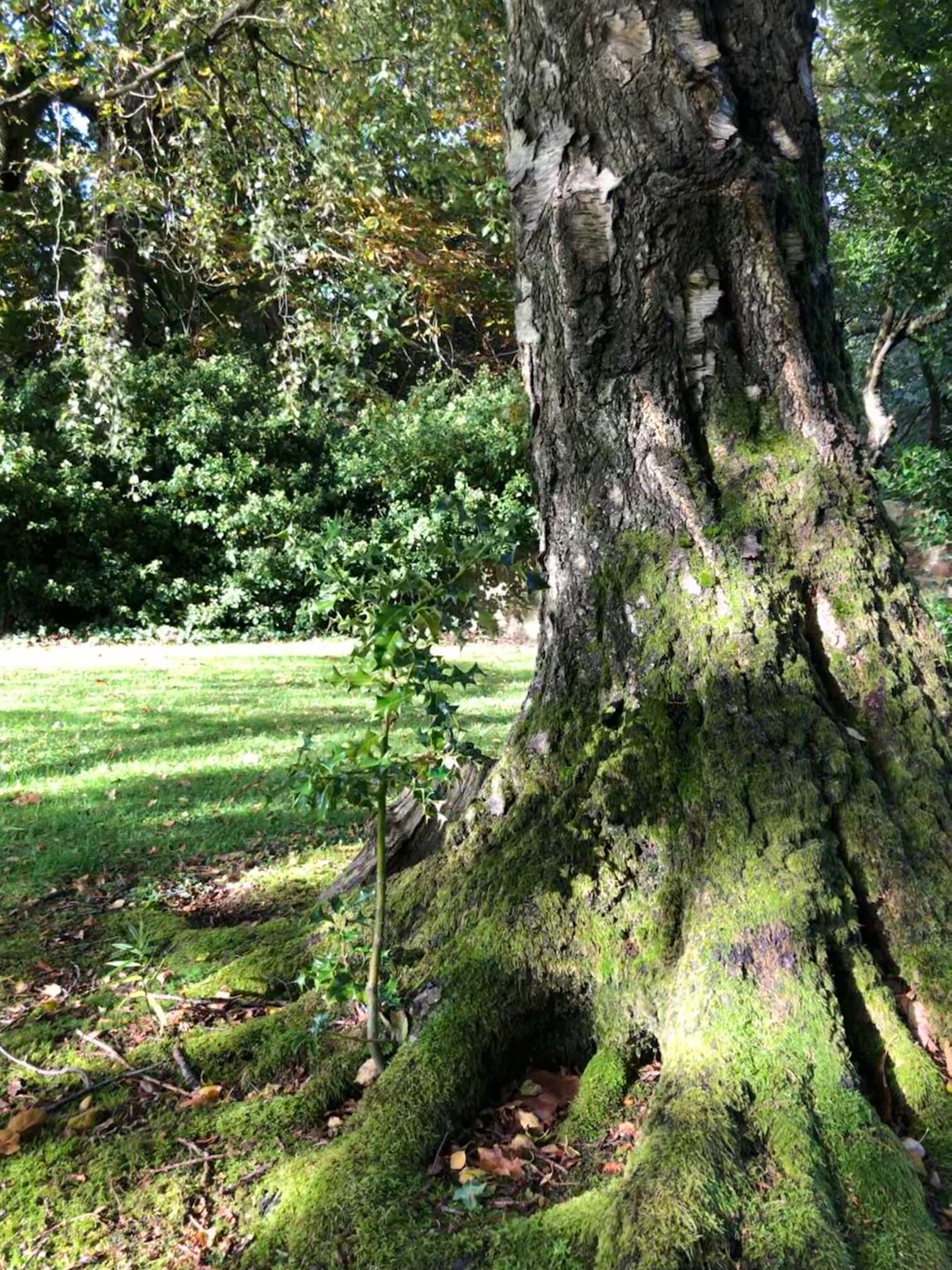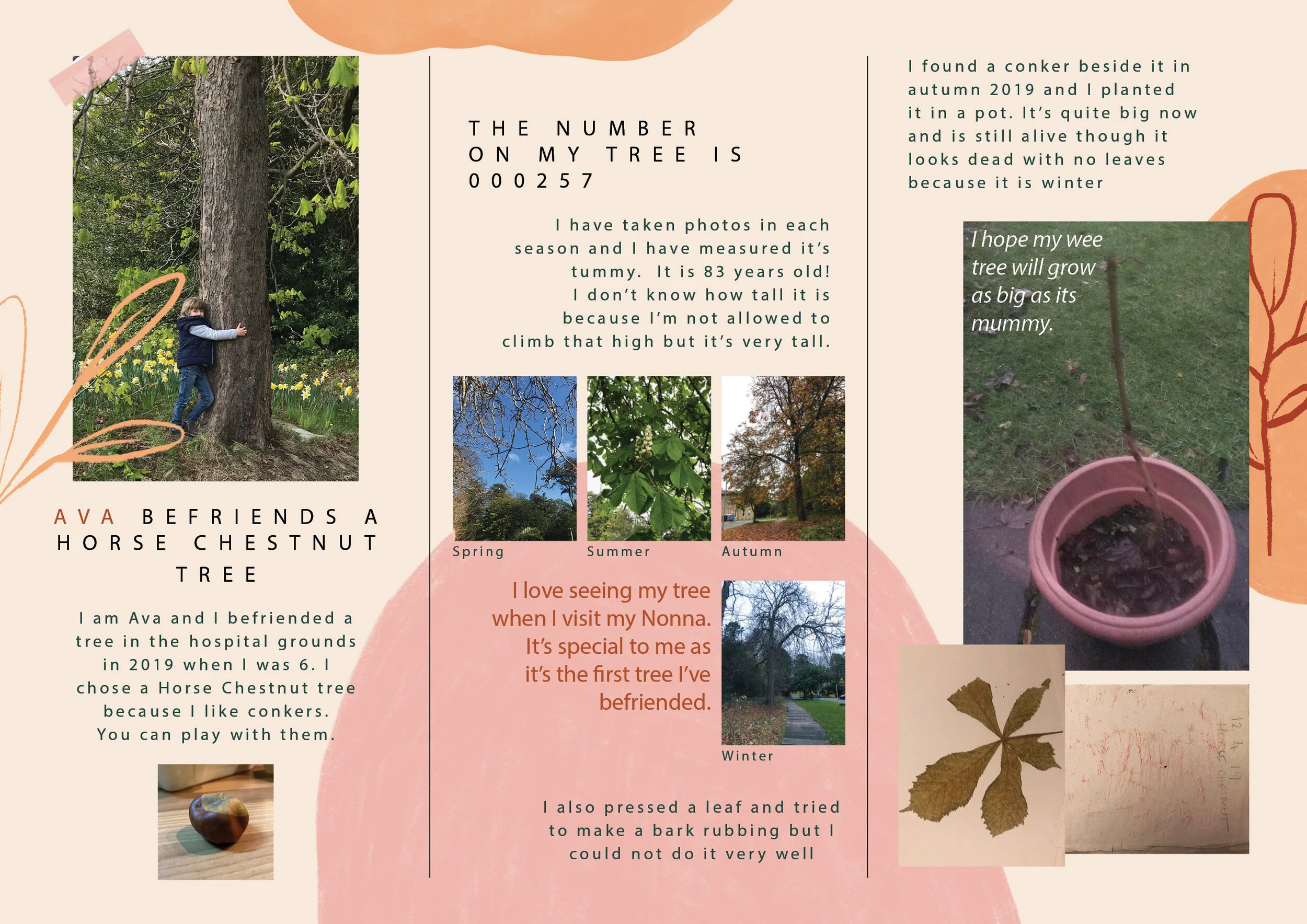
Befriending a tree at the Astley Ainslie
[In case you missed it, you can view Severin Carrell’s article in The Guardian about our tree befrienders: Edinburgh activists rally to protect Astley Ainslie’s green space, accompanied but Murdo MacLeod’s wonderful photos]
Many of the trees in the Astley Ainslie have had Tree Preservation Orders (TPOs) since 2000, but sadly this has not saved some of them from being cut down. Trees with a TPO have been specifically assessed and judged to be worthy of preserving because of their intrinsic beauty; contribution to the landscape; scarcity value and/or collective value. And whilst trees in a conservation area are automatically given some protection, they are not immune from potential tree work.
We would therefore like to encourage all our members to befriend a tree in the Astley Ainslie hospital grounds and to tell us something about why you have chosen that tree.
Click here to view some of the tree befriender stories
This will enable us to build a database of trees which have been befriended. The reasons for doing this are many and varied. Here are just some of them but we are sure you will be able to think of more:
Our hope is that a tree which has been befriended has more chance of surviving because the individual(s) who befriended will keep an eye on it and alert any or all of the people or groups listed above if they have any concerns. According to BS3998 (British Standard for Tree Work, 2010) felling and other work to trees should not take place during April- August so as not to disturb wildlife. The disturbance of a bird’s nest containing eggs or chicks is a criminal offence under the Wildlife and Countryside Act (1981).
To raise our collective awareness, knowledge and appreciation of the many and varied trees on this site some of which are very rare indeed, some of which are very old and some of which are very old and very rare.
Befriending a tree helps us to reconnect with nature. We are all busy living our lives but life goes by very fast and it is so important to pause and take a breath every so often. We have been reminded of this so much during the pandemic.
Recent research by OVO Energy (2020) shows that a majority of British children cannot name five British trees and are unable to identify the distinctive leaves and berries of a holly bush. They are three times more likely to recognise the McDonald’s logo than an oak tree! This research also showed that 87% of parents surveyed said they noticed positive changes in their children’s mood after spending time around trees and green spaces.
How does befriending a tree work?
Befriending a tree is very easy. Here’s what we would like you to do:
Decide which tree you would like to befriend.
Identify what kind of tree it is.
Look to see if it has a metal disk with a number on its trunk. This could be either circular or oblong (some of the trees have both). Make a note of this number(s).
Note the location of your tree (i.e. Where about on the site is it? What is the nearest building to it?)
Send an email to trees@aact.scot providing us with all the above information. You can download this pro forma if that helps. Please also tell us, if you can, about why you chose this tree and any other information you have discovered about it.
You may also want to:
Go onto Edinburgh City Council’s website (https://www.edinburgh.gov.uk) and under the Planning and Building Standards click on Planning and then on Planning applications. Lastly click on View and comment on planning applications. You will not be able to comment but you will be able to see the application to undertake work on various trees within the grounds of the Astley Ainslie hospital by entering the reference 20/03604/TPO. You can search the tree report (survey) which has now been uploaded to see what they have said about the tree you have chosen to befriend. Most but not all of the trees are listed here.
In addition, you may want to:
Take a photo (or several) of your chosen tree perhaps in different seasons or in different weather.
Make a rubbing of the bark.
Collect a fallen leaf and press it.
‘Guestimate’ the age of your chosen tree. You can do this by measuring the circumference of its trunk with a tape measure (in cm) and dividing this number by 2.5. This will give you the approximate age of the tree.
You can also ‘guestimate’ the height of your tree (although you need to be quite supple and have good balance to do this). Walk in a straight line away from your tree until you can see the top of it – now for the hard part – by looking through your legs. When you are far enough away to see this, mark the spot and measure the distance back to your tree. We are told this is called ‘twiganometry’ ;)
Send us some/all of this information which we will use to build up a greater awareness of all the trees on the site and why they matter to you. With your permission we will feature some of them on our website. Our first tree story (from Ava) is below. Click on the image to go to all the tree posters.
Here’s a map of the trees which have currently been befriended.
> Click on a tree icon to find out who each tree’s been befriended by
> Click on the top left corner to see a list of the trees
> Click on the top right corner to open a larger version of this map in a new tab
Get in touch so we can add your special tree!
““Few are altogether deaf to the preaching of pine trees. Their sermons on the mountains go to our hearts; and if people in general could be got into the woods, even for once, to hear the trees speak for themselves all difficulties in the way of forest preservation would vanish.””


